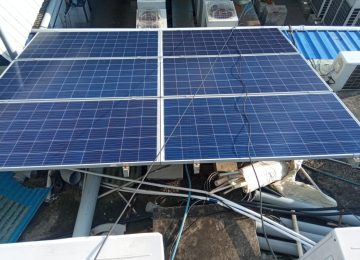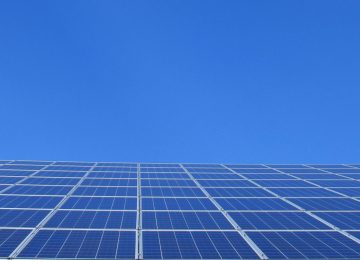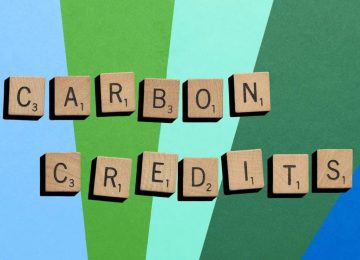Volt Energy, a fintech company operating in the cleantech space, is focused on enabling net-zero energy transition through the integration of distributed energy technologies such as rooftop solar, batteries, vertical axis wind turbines (VAWTs), EVs, etc. In an exclusive interview with Renjini Liza Varghese, Chief News Editor, ESGnews.earth, Rishabh Bajaj, CEO & Founder, Volt Energy (Volt Capital Pvt. Ltd.), discusses the company’s vision to achieve 10,000 installations by 2030 and emerging trends in the green energy transition.
Given the competitive landscape of India’s renewable energy sector, what are your three key strategies for Volt Energy’s growth?
Volt operates in a niche segment of the market, distinct from the broader Indian renewable sector. While utility-scale solar accounts for nearly 85% of current installations and remains the primary growth driver in India, we believe the true potential of solar lies elsewhere. Installing ultra-mega plants has long served captive power needs for large industries. However, solar’s real power lies in democratization – it enables even a roadside vendor or small business owner to generate electricity with a single 500-watt panel.
Globally, rooftop and large-scale ground-mounted solar are split almost 50:50. Europe has already achieved this parity, and Germany is projected to reach 70% rooftop solar by 2040–2050. In India, rooftop solar comprises just about 15% of total installations. By contrast, China added 360 GW of solar capacity between 2021 and 2023, of which 185 GW came from rooftops alone. In 2023 alone, China added around 100 GW of rooftop solar. Despite having three times India’s per capita land availability, China recognizes that solar investments must prioritize distributed systems.
At Volt, we identified two core barriers our customers face: access to capital and lack of trust in the technology. To address this, we developed a deep understanding of both the financing ecosystem and the technical nuances of solar deployment. By integrating the two, we introduced India’s first zero-investment, zero-risk solar model specifically designed for MSMEs.
What do you consider the biggest challenge in India’s distributed renewable energy sector, and how can Volt Energy convert that into an opportunity?
Despite well-defined regulatory frameworks for net metering across India, procedural confusion persists at the DISCOM level, especially in public-sector entities. Many local DISCOM offices are still processing net metering applications for the first time. There’s a clear need for greater transparency so that both DISCOM officials and consumers can proceed with clarity.
DISCOMs must recognize that distributed energy assets will be critical to meeting India’s rapidly growing energy demand. Our per capita energy consumption is expected to rise significantly over the coming decades. Without widespread adoption of distributed technologies, the investment needed to upgrade distribution infrastructure will be immense. Strategically implementing distributed systems can help defer these costs.
There’s an opinion within DISCOMs that allowing rooftop solar and distributed technologies will erode their revenues. But electricity distribution is an annuity-based business – returns are tied to capital expenditure, not consumer revenue. Even with broader deployment of distributed energy, DISCOMs won’t lose revenue, as their returns remain linked to infrastructure investment.
The gap in different levels of discoms is often attributed to the financial condition of the discoms, raising questions about the best solution.
The gaps in DISCOM performance are often attributed to their financial instability. While schemes like UDAY and RDSS have provided temporary relief, their long-term effectiveness remains uncertain.
As the national consensus grows around minimizing government involvement in business, we expect to see increased privatization of the electricity distribution sector in the next decade. While this transition may come with short-term challenges for consumers, it promises long-term improvement in the sector’s financial and technical metrics.
Which cutting-edge energy technologies, beyond solar, is Volt Energy currently exploring—and why?
We have identified several distributed energy resources that can help our customers reduce both their energy costs and carbon footprint. A combination of five to seven such technologies can already fulfill up to 50% of a customer’s energy needs. However, aside from rooftop solar, many of these technologies currently struggle to offer positive net present value (NPV) on capital investment.
That said, we see immense potential in virtual power plants (VPPs), battery storage, EVs, and vertical axis wind turbines. As more distributed assets enter the ecosystem, the role of AI and VPPs becomes vital for managing peak loads. We envision a future where interconnected microgrids segment larger grids, turning consumers into prosumers. In such a setup, EVs (via V2G and G2G modes) can provide peak power support when batteries are depleted.
Imagine a 100-home microgrid with solar panels, wind turbines, and batteries, all controlled by AI. Homes with low power requirements can offset the demand from high-usage homes by sharing energy within the microgrid, creating a balanced, self-sustaining ecosystem.
Do you foresee vertical axis wind turbines (VAWTs) gaining traction in India?
Absolutely. We’re closely tracking the advancements in VAWT technology. Many bright minds are investing considerable time and resources into this space. Currently, VAWTs have a levelized cost of energy (LCOE) about five times higher than rooftop solar. However, we’re collaborating with leading VAWT manufacturers and are optimistic about deploying projects for our customers soon.
Your competitors include major players like Tata and Adani. What is Volt Energy’s long-term differentiator?
Our biggest differentiator is our deep understanding of our product category, paired with a passionate, highly efficient team. While many competitors engage in price wars, we focus on delivering the best quality at the most competitive price. Being a privately held company gives us the flexibility to take a long-term view – unlike listed companies, which often face quarterly performance pressures from capital markets.
Your thoughts on time-of-day (ToD) pricing?
ToD is a promising initiative. In the long run, it will enhance DISCOM performance and encourage adoption of storage solutions and virtual power plants. All Volt projects are equipped with VPP-ready smart controllers, enabling remote operation and seamless future integration with VPP use cases.
Considering global geopolitical volatility, how resilient is Volt Energy to supply chain disruptions?
We’re well-prepared. Over the past 12 months, we’ve aligned with Indian solar manufacturers in compliance with the Government of India’s ALMM mandates. The government has shown strong intent to bolster domestic manufacturing, and we’ve built strategic partnerships with key panel and cell manufacturers in India to safeguard our supply chain and ensure continuity for our customers.
As a multi-service, multi-product platform, how do you manage regulatory compliance?
Our in-house regulatory team is well-versed in navigating the complex landscape of behind-the-meter and distributed projects. They manage all necessary approvals from DISCOMs prior to grid connection.
How is Volt Energy using digital transformation (AI, IoT, data analytics) to enhance operations and customer experience?
Digital transformation is central to our operational efficiency. From sales to project delivery to ongoing monitoring, everything runs through our in-house ERP system, which provides end-to-end visibility into each project’s lifecycle.
What sustainable practices have you adopted within the organization?
We’ve transitioned from paper-based PPAs to fully digital documentation, supported by a centralized digital repository. For short-distance logistics, we use electric vehicles. While long-distance transport remains a challenge, we aim to become Scope 1 and Scope 2 emission-free by 2030.
Compared to wind, solar has more waste implications. How are you addressing solar waste?
Solar recycling is still evolving, but current concerns are limited. Significant waste generation in India is not expected for another 20 years. Moreover, solar panels have long lifespans. For example, modules installed in 1984 at the Sakura Solar Energy Center in Japan were still operational in 2021 – with only a 17.2% degradation over 36 years. This reflects the long-term reliability of solar technology.
Green jobs are booming. What’s your take on the skills gap in the industry?
The best way to address the skills gap is to build your own training programs. That’s our approach – we hire people with strong aptitude and invest in their development to create future leaders.
What is your five-year vision for Volt Energy?
We aim to become India’s largest distributed energy company and lead the way in delivering a risk-free energy transition to our customers.











